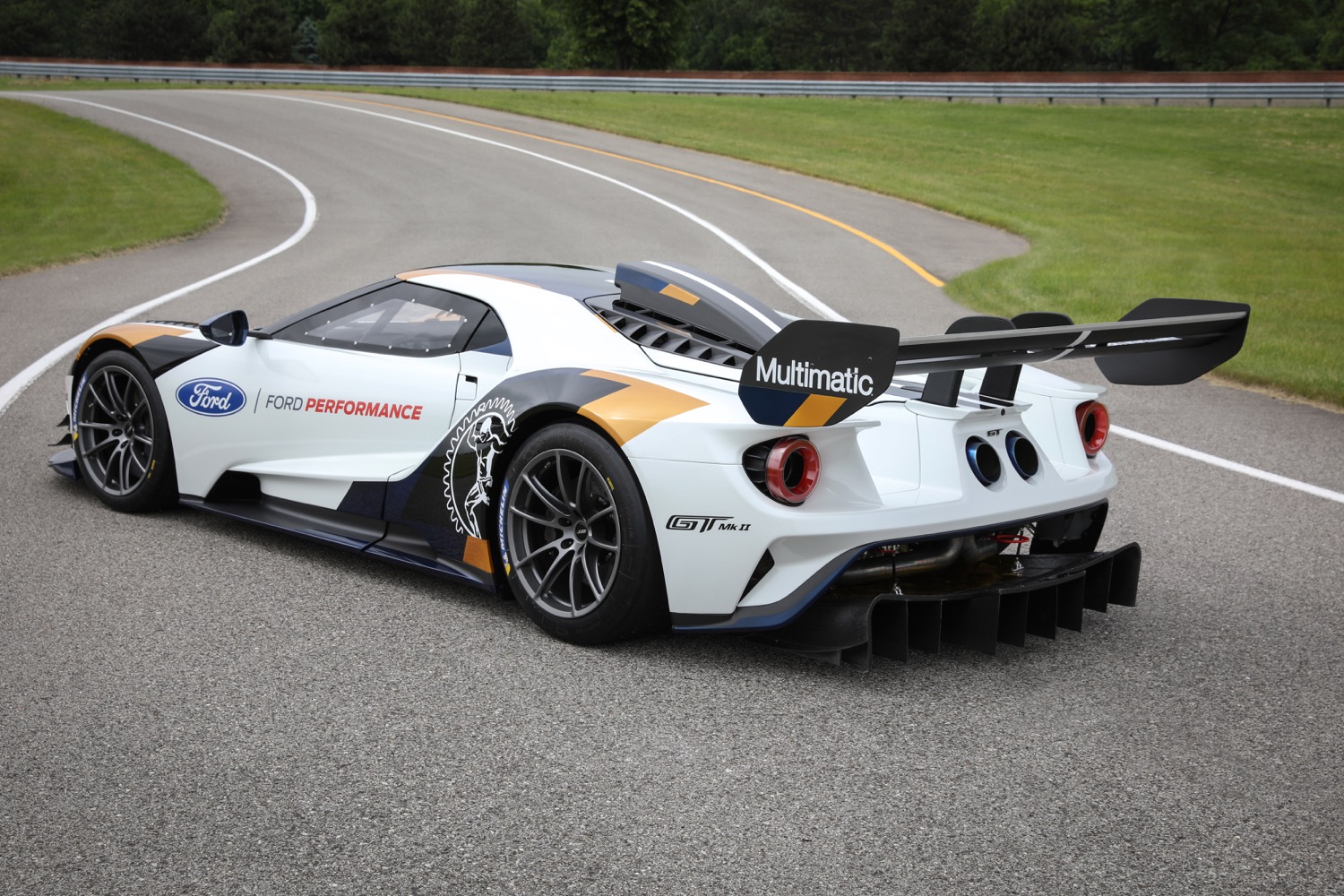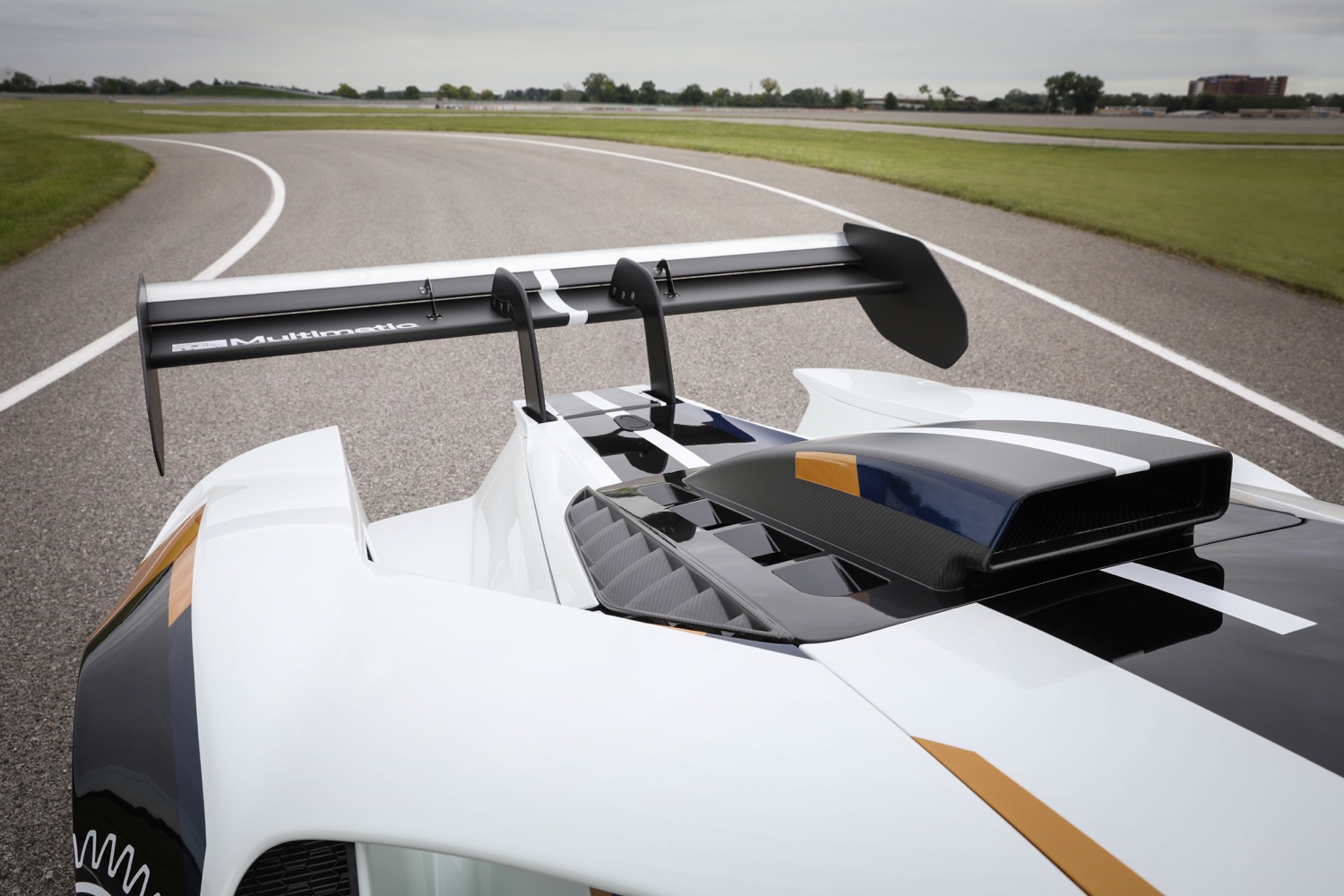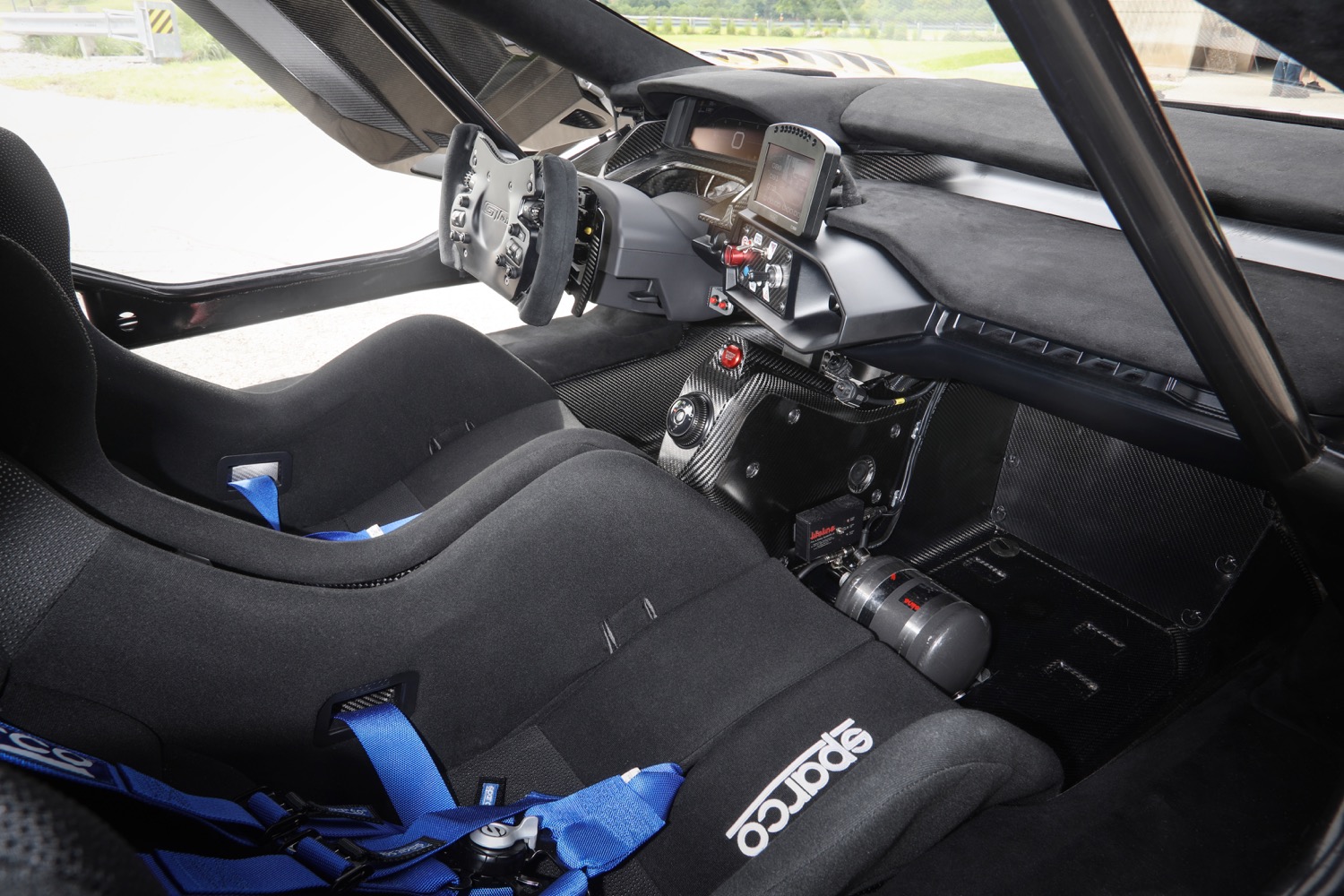Ford is winding down its GT racing program, but the Blue Oval still has one more surprise planned around the 216-mph supercar. At the 2019 Goodwood Festival of Speed, Ford announced a hotter, track-only version of the GT, with a limited production run of just 45 cars. Dubbed the Ford GT Mk II, the new version is not road legal, but it also wasn’t designed to compete in any racing series. It’s just a fun toy for (very wealthy) fans of speed.
The Mk II was a joint project of Ford and Multimatic, the Canadian company that designed the GT race car and oversees production of GT road cars for customers. The partners started with a road-going GT, adding more extreme aerodynamic elements and upgrading the engine. Because they weren’t restricted by any racing regulations, or the need to make the car road legal, Ford and Multimatic were free to do whatever they wanted.
The GT Mk II sprouts a massive rear wing, front dive planes, and fender louvers reminiscent of the GT race car. They allow the Mk II to produce over 400% more downforce than the GT road car, according to Ford. The aerodynamic upgrades work with Michelin Pilot Sport racing tires to produce a titanic 2.0g of lateral grip in corners. Your internal organs will come unstuck before this car does.
Ford retained the 3.5-liter twin-turbocharged EcoBoost V6 used in other versions of the GT, but added more power. The Blue Oval wouldn’t say how much, though, only boasting that the Mk II is the most powerful version of the GT yet, with 200 horsepower more than the race car. Ford didn’t say if the Mk II would surpass the Shelby GT500 Mustang’s 760 hp to become its most powerful production car. To keep the tightly-packaged engine cool, the Mk II gets a roof-mounted air scoop and a system that sprays water into the charge air cooler.
The GT was never a luxury car, but Ford and Multimatic stripped away whatever convenience features it had. The road car’s adjustable ride height and drive modes were ditched, saving over 200 pounds, according to Ford. The car comes standard with a single Sparco race seat and six-point harness, the passenger seat is optional. Ford does include a MoTeC data acquisition system, with a display that doubles as the screen for a rearview camera.
Ford capped GT road-car production at no more than 250 cars per year, but the GT Mk II will make the road car look common by comparison. Just 45 Mk II track cars will be built, with a starting price of $1.2 million. Cars will be built by Multimatic in Markham, Ontario, starting on the regular GT production line before being moved to a special facility for finishing. If you’re willing to spend seven figures on something you can’t even drive to the local cars and coffee meet, reach out to Ford.
Updated on July 4, 2019: Added confirmation of the Ford GT Mk II, including details and photos.












